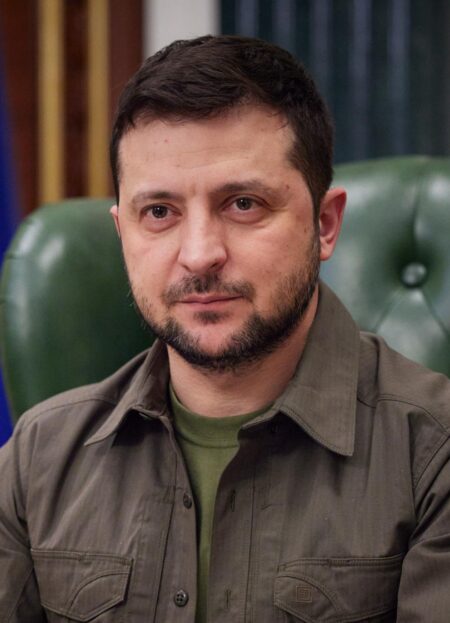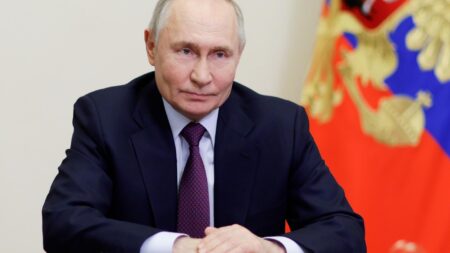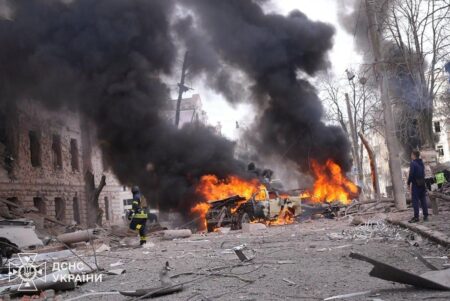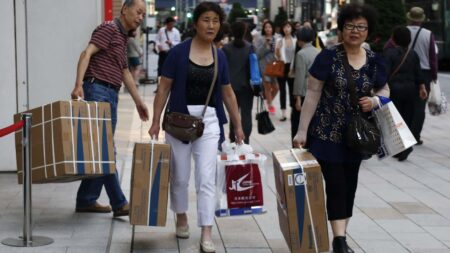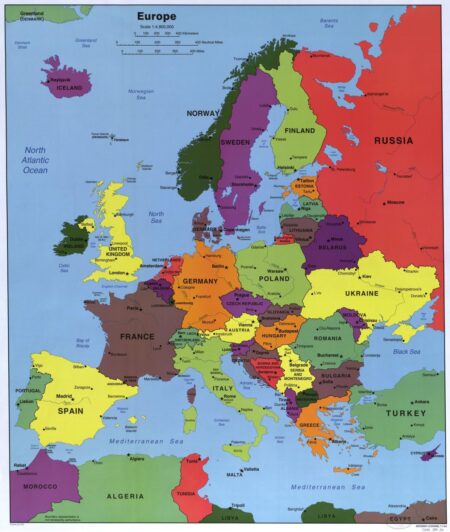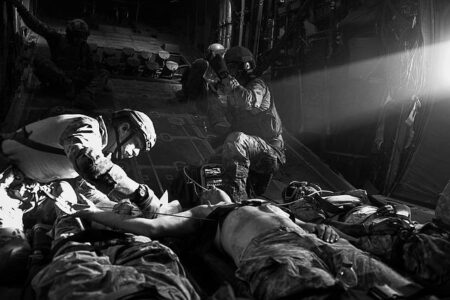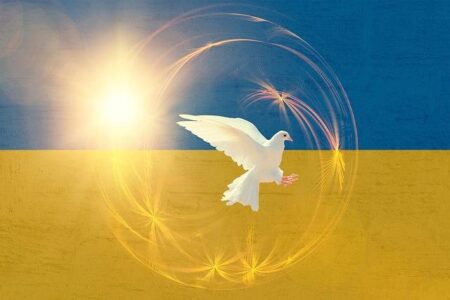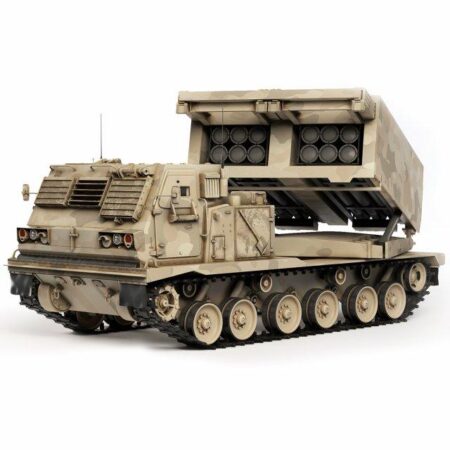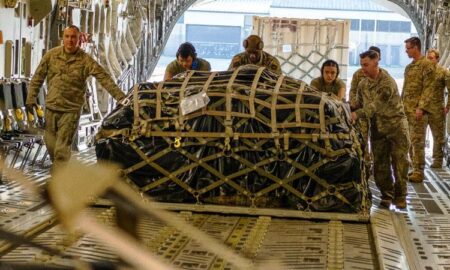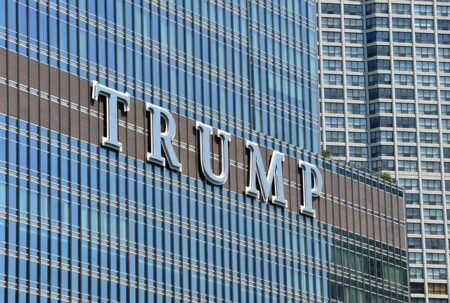Ukrainian President Volodymyr Zelensky has made a heartfelt pledge for an Easter truce, seeking to cultivate peace during this sacred time. Yet, he has pointed fingers at Russia for breaching the ceasefire, intensifying the already simmering tensions in the region.
Browsing: Ukraine conflict
Russian President Vladimir Putin recently met with the brave individuals who were freed from captivity in Gaza, highlighting the pivotal role that Russia’s strong connections with Palestinian leadership played in their release. This significant meeting not only showcases the resilience of those hostages but also underscores Russia’s growing influence in the complex landscape of Middle Eastern diplomacy.
A brutal Russian attack on a Ukrainian city has left at least 31 people dead and 80 injured, according to NBC News. The strike has intensified fears over civilian safety as the conflict in Ukraine escalates amid ongoing hostilities.
US envoy Jim Witkoff met with President Vladimir Putin amid tensions over Ukraine, as former President Trump urged Russia to “get moving” on resolving the conflict. The meetings underscore ongoing geopolitical complexities as international diplomacy continues.
Ukrainian President Volodymyr Zelensky announced that intelligence agencies have identified 155 Chinese citizens fighting alongside Russian forces. This revelation raises concerns over foreign involvement in the ongoing conflict amid heightened geopolitical tensions.
European leaders have unanimously stated that now is not the opportune moment to lift sanctions against Russia. This consensus reflects ongoing concerns over the nation’s actions and signals a commitment to maintaining pressure until compliance is achieved.
Germany has reportedly seized an oil tanker linked to Russia‚Äôs shadow fleet, aiming to curb the Kremlin’s circumvention of sanctions. This move underscores Berlin’s commitment to international sanctions and highlights ongoing tensions in the region.
On March 18, 2025, the Institute for the Study of War released its latest Russian Offensive Campaign Assessment, highlighting intensified military operations in Ukraine. Analysts emphasize strategic shifts and increased troop deployments as Moscow seeks to regain territorial control.
In a staggering escalation of conflict, recent reports indicate that approximately 100,000 Russian soldiers have been killed or severely wounded within just three months. However, analysts caution that this significant toll may not substantially alter Ukraine’s chances of victory in the ongoing war.
In a significant development, the White House announced that a peace deal for Ukraine is closer than ever as talks between former President Trump and President Putin loom. This marks a pivotal moment in ongoing diplomatic efforts to resolve the conflict.
The United Kingdom is reportedly evaluating the acquisition of additional M270 Multiple Launch Rocket Systems (MLRS) to bolster its military capabilities. This move reflects ongoing efforts to enhance artillery support amid evolving defense needs and geopolitical tensions.
The Institute for the Study of War’s March 13, 2025, report reveals significant developments in Russia‚Äôs military strategy. It highlights intensified offensives in key regions, raising concerns about escalation and its implications for regional stability.
The latest Russian Offensive Campaign Assessment from the Institute for the Study of War, dated March 11, 2025, outlines escalating military operations in Eastern Europe, highlighting strategic shifts and potential impacts on regional stability.
In a recent statement, Russian President Vladimir Putin expressed tentative support for a ceasefire in Ukraine, though he voiced skepticism about its feasibility. His remarks highlight ongoing complexities in the conflict, as diplomatic efforts continue to face significant challenges.
The U.S. has resumed military aid and intelligence sharing with Ukraine as the nation expresses willingness for a 30-day ceasefire. This development comes amid ongoing tensions and efforts to foster dialogue in the region, signaling potential shifts in strategy.
In a renewed escalation of the ongoing conflict, Russian President Vladimir Putin has directed the military to forcefully remove the last Ukrainian troops from Russian territory. This move signals a significant intensification of hostilities in the region.
In recent comments, former President Donald Trump asserted that Russian President Vladimir Putin would adopt a more “generous” approach in peace negotiations regarding Ukraine, contrasting with what he described as the “difficult” stance of Ukraine‚Äôs leadership.
France is mobilizing for a ‘wartime economy’ in response to the growing tensions in Ukraine, as U.S. support appears to wane. Paris aims to bolster military production and resources, underscoring its commitment to European security amidst shifting global dynamics.
Italy has put forward a proposal to extend NATO’s Article 5 protections to Ukraine, emphasizing collective defense in the face of ongoing aggression. This initiative aims to bolster Ukraine’s security and reinforce NATO’s commitment to regional stability.
In response to evolving geopolitical dynamics, Airbus Defense and Space CEO asserts that Germany must decrease its dependence on U.S. arms. This shift aims to enhance Europe’s defense autonomy and adapt to emerging security challenges.

